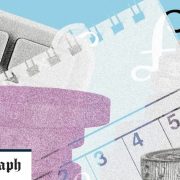Write to Kate with your pension problem: pensionsdoctor@Finance.co.uk. Columns are published twice a month on Tuesday mornings
Kate,
My wife is 54, works part time and earns £6,500. We have a good amount of savings in Isas. Can we put £6,000 a year into her pension and take advantage of the tax breaks as the Isa rates are so poor.
From Mark Anderson
When saving for retirement it’s important to make the most of all your assets, and this includes taking advantage of the tax incentives on offer. Both pensions and Isas are tax-efficient ways of saving for retirement, but they work very differently. Isas are the most flexible form of tax-efficient savings plan available. Pensions are more tax-efficient but less flexible, since benefits can only be accessed from age 55.
Interest rates are at an all-time low, and this is reflected in the interest rates offered by cash Isas. An alternative is to invest in stocks and shares Isas which are suitable for medium to longer term (that is, five years plus) savings. These offer a wide range of investments, similar to those offered by pensions, and both allow funds to grow tax-free.
Whether pensions or Isas are better for you and your wife will depend on your personal circumstances, such as your age, entitlement to tax relief and when you’ll need access to these funds. It’s a good idea to have a combination of solutions to cover short, medium and longer term savings, so you get the tax benefits of a pension, but also have accessible savings as and when you need them.
I’ve set out the main points to think about.
Paying money in
One of the main advantages of a pension over an Isa is that you receive tax relief on your personal contributions at your highest marginal tax rate, 20pc, 40pc or 45pc or at Scottish rates if you’re a Scottish taxpayer. Non-taxpayers can also receive a tax relief top-up at the basic rate on their personal pension contributions in some pension schemes such as self-invested personal pensions (Sipps).
For basic rate taxpayers, and non-taxpayers, this means that for every £100 you contribute, the government adds another £25 into your pension. Taxpayers who pay higher income tax rates, can claim additional tax relief at their highest marginal rate.
Pensions versus Isas
Generally, the maximum amount you can save into a pension annually, without incurring a tax charge, is £40,000. This amount is called the annual allowance, and it includes all contributions made by you, your employer and any third party on your behalf. Your own contributions are limited to the greater of 100pc of your taxable earnings in the tax year or £3,600 gross for tax relief purposes.
Be warned. Once you access your pension (beyond taking the 25pc tax free amount), you will trigger the "money purchase annual allowance". This means you can only put in £4,000 (including tax relief) into your pension each year.
You don’t get any tax relief top up on Isa savings and the maximum you can pay in is £20,000 each tax year.
As your wife’s earnings are below the personal allowance of £12,500, I’m assuming she doesn’t pay income tax. She will still be entitled to the pension tax relief top up as though she were a basic rate taxpayer if she makes a personal contribution into her Sipp.
As her total pension contribution, including tax relief, can’t exceed her annual earnings of £6,500 the maximum pension contribution she can pay is £5,200, to receive tax relief. This will then be topped up by basic rate tax relief of £1,300 from HM Revenue & Customs to give a total contribution of £6,500.
There’s also a difference in the amount you can build up in pensions and Isas over your lifetime, without suffering a tax charge. For pensions this lifetime limit is currently £1,073,100 for most people, and if you have more than this amount an extra tax charge is payable when you take benefits that exceed this limit. There is no lifetime limit on the amount you can invest in Isas.
Ask Kate a question | The Telegraph’s pensions doctor
Taking money out
Another big difference is how you access money from pensions and Isas. Pensions are normally locked in until your 55th birthday as they are designed to provide a retirement income. You can take money out of Isas at any time, but some may only be accessed early by paying a penalty.
You don’t pay income tax on the money you take out of your Isa. However, pension payments are subject to income tax at your marginal rate, although 25pc of your pension fund is normally available as a tax-free lump sum.
Inheritance
Pensions have some advantages over Isas when it comes to inheritance tax planning.
Isas form part of your estate for inheritance tax purposes, but they can be passed on to a spouse or civil partner tax-free.
Pensions don’t form part of your estate, so you don’t pay inheritance tax on funds that remain within your pension.
In addition, if you die before your 75th birthday and you have a defined contribution pension, any unused pension funds can be passed onto your beneficiaries free of income tax. If you die after age 75 your beneficiaries will have to pay income tax at their marginal rate on any inherited pension funds when they are actually taken.
Reader Service: Try our Pension Advice Service today and get a free recommendation on whether we can improve your pensions. Capital at risk.
























Comments